Masterpiece: The most exquisite production bike in the world
Ducati has created what I consider to be the most beautiful, most exquisite production missle motorcycle the world has yet seen - and it's a drastic departure from the "traditional" design parameters that one normally associates with the Italian Marque. I've spent more than a few weeks at Ducati Corse's workshop and design studios so I'm quite familiar with their capabilities, but this machine, the 1199 Panigale, has completely blown me away with the engineering genius that has shaped every major component, and the technical genius of the entire sporting package. If ever there has been a Masterpiece of modern Italian Design - this is it.
I remember my discussions with powertrain engineers during the development of the SuperQuadro engine (or SuperQuadrata as it was known in its early stages), a radically oversquare v-twin that was destined for extreme RPM's, and I remember the difficulty we had on the GP teams with the packaging of our complex and sophisticated electronics control devices. I won't be getting into the precise details of the materials tested and chosen for the production version of this machine, but I would like to take a few moments and discuss what I feel are the noteworthy and ground-breaking aspects of the 1199; a machine that I will simply refer to as "God-Bike". The laws of physics have been bent; gaps in logic forced open and closed with the high speed precision that can only come from Ducati's signature desmodromic valvetrain. This is truly a stunning machine, especially when the clothes come off and we're left with the naked truth.
Incredibile. Every time I look at this picture I am shocked and stunned by how well packaged everything is. One engine, two wheels. This is often how I describe my personal machines (whatever style you want to call them), and this is the purest distillation of a motorcycle in my eyes. Never have I come across a production "streetbike" that so accurately matches my motorcycling ethos, with the exception of the ABS and the host of other electronic aids, such as traction control and push-button, servo-motored suspension. I could speak at length about all the techno-wizardry that abounds throughout the bike, but the bottom line is that the 1199 is the most well thought out Ducati to roll off the factory floor. People speak about the CoG (Center of gravity) and how important it is to have a bike that rotates well around this, but this machine is the absolute epitome of mass centralization, and perhaps even beyond. Everything works better when the gyroscopic forces of the crankshaft are in the center. Everything here is connected through the motor, but we'll start at the front and make our way back.
The first thing I noticed about Ducati's ultimate twin were the radially mounted front fender, rearsets, and even the subframe (!) - clearly this bike was completely designed using every benefit made available by a computer. This is a marked departure from previous designs that held true to age old traditions . . . Steel frame? Always worked well before, cheap and easy to produce, "let's keep using it". Less work means more time to concentrate on other aspects of the project. The 1199 is a clean sheet design. New motor, new ways to connect all the dots, new people and new ideas bubbling up to the surface - New Thought at the Factory. Electronically adjustable compression and rebound damping in the forks and shock? Great for a touring bike, especially one that will see heavy loads added and removed with frequency, but in my opinion, not really necessary for a sport bike. The great rain riders of our day have rarely made significant changes to their suspension when racing in the wet - CS27 barely changes a thing, CV71 went out with the same set-up as dry conditions, AB4 might have swapped out to some softer springs (he preferred a little more pitch fore and aft when it was wet). VR46? Who knows, haha. The point is, I highly doubt most street riders will take advantage of this novel feature (but then again, what street rider will ever be able to use this bike at anywhere near it's full capabilities?). What this does do is open the door for is a learning algorithm that can analyze and calculate how a rider is using the machine on a closed course (repeatable corners in succession). Too much or too little squat coming out of a corner - corroborated by the traction control - and we have an over-arching bike control system that can alter the performance while the rider concentrates on line selection. Fly-by-wire throttle means that he/she can open it up as much and as fast as they want, but the computer controls the power delivery. Of course, additional pressure sensors will need to be installed in the suspension components for this to be realized, but these early servo-assisted items are just the beginning of a truly active suspension system. The system isn't here, yet (though it was on Yamaha's and Ducati's in GP for a short time just a few years ago), but I'm sure it's coming for the street at some point. Every piece of data is being collected and it will only serve to feed the computer more and more. Digital motorcycles. That's heavy, man.
New monoblock Brembo brake calipers, developed specifically for this machine, are likely just a light evolution of their previous designs, possibly giving more cooling surface to the caliper and weighing fractionally less. Brembo bought Marchesini a few years ago, and in partnering with Ducati to provide their "top-line" products on Ducati's new flagship, I would expect nothing less than the latest and greatest to be showcased here. Lighter forged wheels with a 3 spoke "W" design replace the previous 7 spoke banana design, which replaced 5 spoke "Y" design (my personal favorite). What bothers me a little are the various photos I've come across (recent Motorcyclist Magazine article, Hard Parts cad drawing, for example) that show the brake rotor carrier being offset/rotated so the spokes of the carrier don't line up symmetrically with the wheel (something we've seen before on Ducati's), but it appears as if this has been corrected for the final production bikes.
I'm surprised that the air intakes are mounted so far from the center point on the front fairing, as this would allow for the highest density of intake charge and ram-air effect, but I don't have the volumetric efficiency numbers to determine whether or not the added intake tract length is more beneficial for the entire airbox volume. More than likely, it was a stylistic concern and was chosen so the lineage of the 916/1098 could be preserved visually. Besides, with 195HP on tap, do we really need "more" ram-air effect? 200 HP is a much rounder number . . . and that much scarier. The actual intakes themselves look horrible to me on the faired bike, drooping like saggy bags under the LED headlights (another industry first), and the short, flat windscreen should have been replaced with something that deflects the wind a little better (but then, sales of aftermarket and Corse windscreens would drop, haha). But the overall profile of the front end is wonderful, sharp and distinct, and with a functional "cut-out" for the front fender. It's low down and it means business.
I will always have a preference for the Desmosedici's headlights, and bull nose fairing . . . and I think this front end is my absolute favorite on a production streetbike.
Back to the naked bike; I'm most impressed with how tightly everything is placed relative to the engine, the center piece and center point of the bike. Engines get very hot . . . and one of Ducati's "L-twin" draw-backs is that the front cylinder has always taken up space where the radiator goes. Special racing radiators have been made with a cut away section for the front valve cover to poke through, and despite rotating the entire engine assembly rearwards (which allowed the motor to move forward 32mm, and a longer swingarm, too, by 39mm), there's still no nice way to get around the tall cylinder head, despite its short, short stroke. This leads to agonizingly long radiator hoses coming from the waterpump, nestled deep in the V of the motor. Not that long hoses are necessarily a bad thing, but visible hoses and wires have always been a distraction from the meat and potatoes of a machine, something Ducati has always struggled with (see any testastretta engine'd Monster, for example).
I'm amazed to see the ABS control unit mounted so closely to the engine, as heat and brake fluid don't go well together, and the rest of the parts visible from the right side are so nicely placed . . . the swingarm pivot through the crankcases and bolt on pivot mounts, the mounting design of the rearsets to maximize their strength and reduce flex when a rider is really crawling around the bike on the track and really loading the rear with his feet . . . these are beautiful pieces, little works of aluminum art. Will be see magnesium alloy versions on a "Super-Light" 1199R model in the future? Doubtful, but the potential is there. I'm guessing Brembo's ability to forge and machine large pieces of aluminum might trickle over and we'll see a 1199 version with more forged, billet pieces than the base model. Radiator overflow mounted to the inner rad air funnel? Saw that on the GP bike . . . only this version is much, much nicer.
And those pipes! What a triumph of spaghetti we are witness to - that the primary length of the headers has been stealthily hidden in the muffler, effectively doubling what you can already see and just about replicating the overall exhaust length you'd traditionally see on the previous 916/1098 platforms. Torque is a solid 95 foot pounds, and comes in at a rather high RPM, but this is likely a consequence of the light weight crankshaft and not so much an issue because of the exhaust routing. Engine design is always a compromise, and if you want it to spin past 10K RPM, you're going t sacrifice a little bit on the bottom. The rear exhaust does look horrible, though . . . hanging out like a twisted clown balloon and covered with black plastic. It reminds me of a diaper under the tailsection - but where else is it going to go? Would be interesting to see if future generations of this bike have the airbox going completely over and around the rear cylinder and having the intake/exhaust directions reversed, so that the exhaust pipe comes out from the front side (ala HD XR750, Vincent).
I think what's really going to shock people about this bike is the riding position. Gone is the traditional Ducati torture rack riding position where the rider is stretched out over a long fuel tank and grasping narrow bars over a steep fork. Now we've got something of a hybrid sport bike (at least by Ducati standards), one where emphasis on control is accentuated by wider, flatter handlebars and clip-ons. All the better to save those front end wiggles when the power starts to kick in. The seat is closer to the headstock by over an inch, and that's a huge improvement for normal sized riders. These are big design considerations, because the human interface is the most critical element of a motorcycle, and makes me wonder if the fuel capacity has been reduced by a few liters just to make space. I suppose it's not really a big issue if the 1199 gets a hundred miles to a tank, or 80. No matter what, it's going to get there quickly. Bring it on!
Airbox that doubles as the main "frame" to hold the forks? An idea first seen and proven in GrandPrix competition in 2009, a scant 3 years ago (or about a thousand days, give or take), though the design dates back to the Vincent, the Britten, and less known, a carbon fiber frameless racebike penned by Antonio Cobas, the Spanish "father" of the modern twin spar aluminum chassis. The box frame shown on the Ducati is the jewel of this bike, so simple a concept and now here, for purchase at your local dealer. Only a highly agile company could bring this from the racetrack to the public in such a short timespan, or perhaps it's better said that only Ducati has the conviction and faith to stand behind their prototype race designs so much that they've fulfilled their promise to "sell what they race". Where's my V5, Honda??
Additional genius abounds in this shot . . . and one that will surely enable more of these machines to stay on the road or the track after they've crashed. Low-side and tweak your footpeg mounting area? Currently, if you were to damage the frame of your sportbike, your insurance company would more than likely total the vehicle out because it's not labor/cost effective to replace something as serious as the frame. Not so here! The 1199 is perfectly modular, and this style of design lends itself well to precise part replacement. Everything can quickly and easily be disassembled (or assembled on the Factory lines) in a short time. For racing purposes, the side shock will be a boon for rapid linkage ratio swaps. Since the engine is already a stressed member of the chassis, we won't see any flex through the motor by having the shock mounted on one side, and twist shouldn't be an issue. Swingarm pivot utilizes a hollow axle, held together by a pinch clamp (just like a front fork bottom), once again preserving strength but cutting a large amount of static weight.
What else is there to notice here?
HUGE clutch cover! This is the first time a Ducati flagship model has come with a wet clutch, and this is likely for a couple of reasons. First off, it allow Ducati to source clutch plates from a cheaper source as they're far more commonly available in a wet design. Wet clutches tend to last longer, also, because they're cooled in the oil bath of the engine. Also, going to a wet clutch drastically reduces engine noise, which is something not often considered by the consumer, but it's something the EPA cares about (noise emissions). Yes, I know that the dry clutches are already engaged when doing the "ride by" sound level test, but the noise has always been an issue. Previous Ducati even had sound-proofing materials added to the inner fairing panels just to reduce the audible clatter, even though it was "signature" Ducati. Same reasoning applies to the use of chain drive for the desmodromic valve actuation system. It's cheaper to manufacture and provides a longer service interval than the traditional belts. Also, by having the chain inboard of the engine there's more available real estate for other components to be mounted. Smart, but not entirely perfect. I expect we'll see how much variance the valve timing can have once engine builders get ahold of the 1199 mill because cam chains aren't perfect . . .
I know it's a magnesium clutch cover, and that seems awfully fragile for a sportbike. Especially because it's so prominently displayed on the right side of the bike like an asphalt magnet. I think the aftermarket is going to have a field day with this one - giant billet blocks will be turned into sliders with replaceable delrin pucks, which will also save the exposed and presumably delicate exhaust header. I'm guessing the bodywork will be incredible expensive (as it always is), but a major drawback of this wet clutch cover is that if it breaks open on the road or track, not only does oil leak out, but debris and contaminants get in, and this can be a very bad thing for such a finely tuned engine with incredibly precise tolerances.
What we're seeing is more than likely the future of motorcycle design, completely modular and centered around the crankshaft. New doors have been blasted open and I'm sure that other motorcycle manufacturers are scrambling to have their design departments come up with the drawings and other materials needed to begin walking a similar path. Kind of reminds me of an F1 car. The motorcycle IS the chassis! The electronic aids (ABS, DTC) will make good riders into great riders, and great riders will become lazier, haha. I can't wait to throw a leg over one of these machines and see how far is pushes me to "take it to that next level". With that in mind . . . I know what bike would make an incredible Street Fighter . . . and I know just the person who should be making one ;)




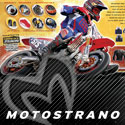

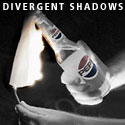
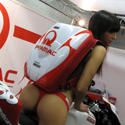

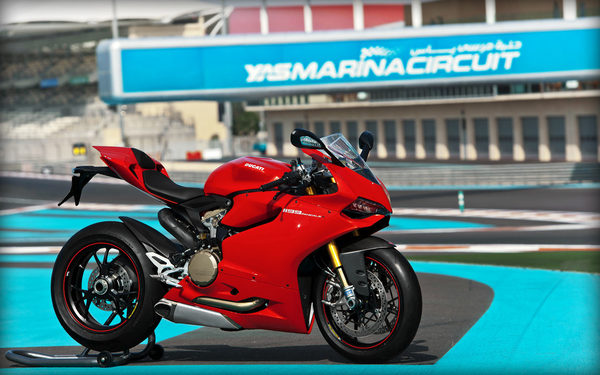
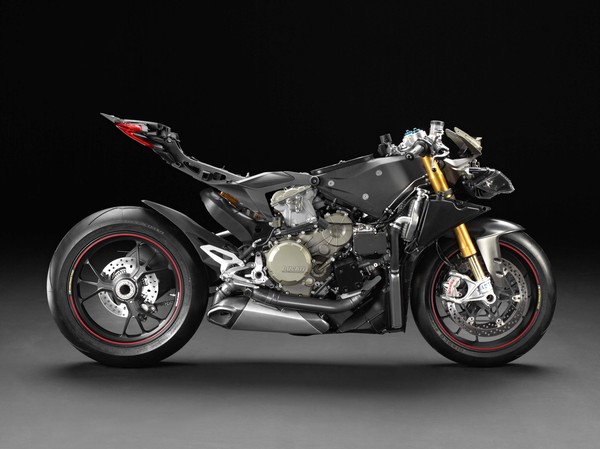
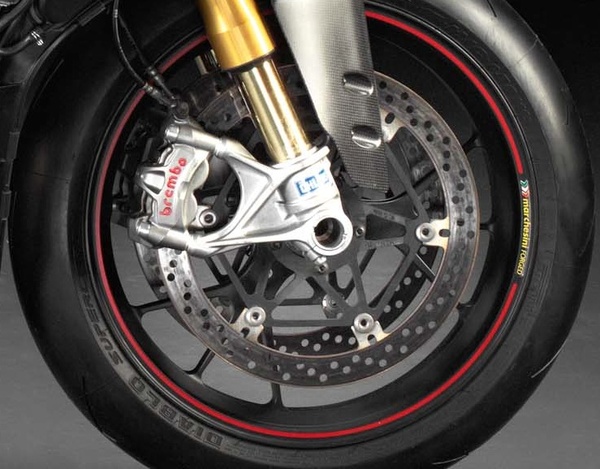
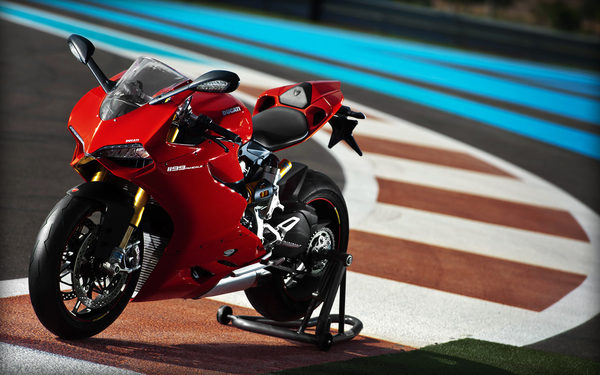
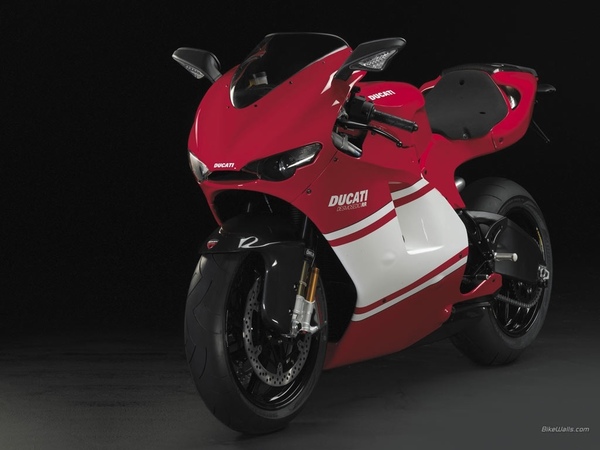
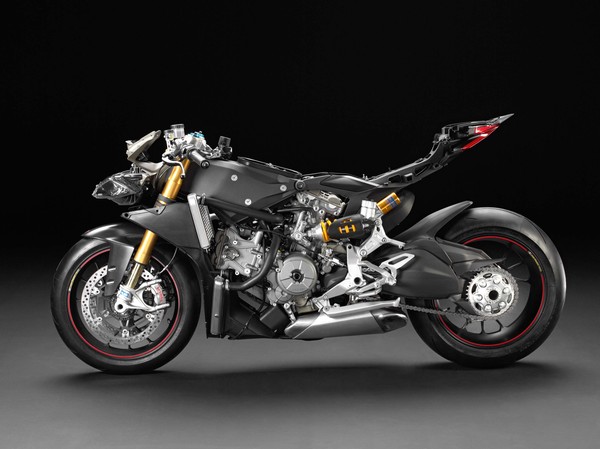
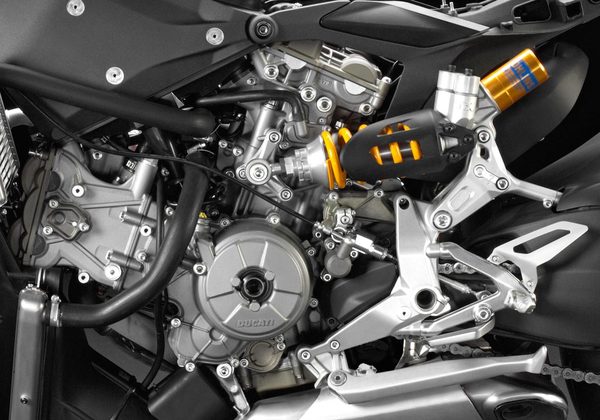
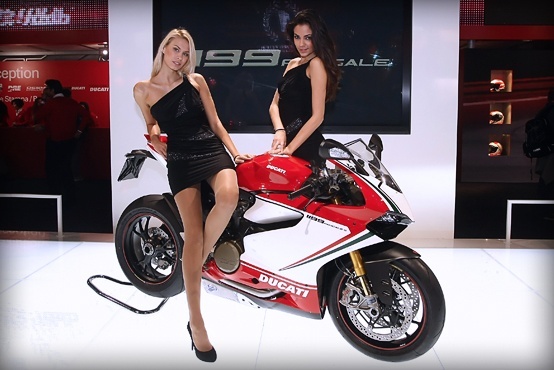
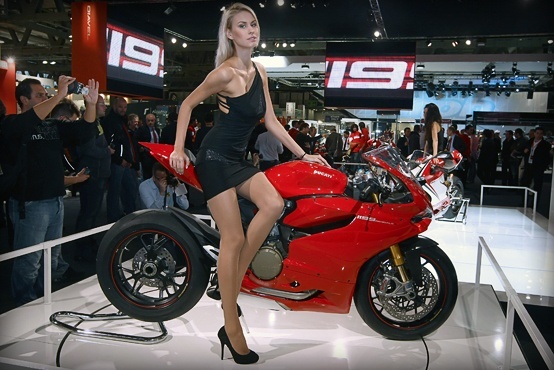

Comments
Nice, keep up the good work.
Posted by: Tony Shaw | March 27, 2012 08:42 AM
Fantastic read ! Was thoroughly impressed with your detailed observations :)
Posted by: Nino | March 28, 2012 10:16 PM
Hi Liam. It's been a while. Hope the bay's treating you well. I had hoped to be back there by now, now I'm in Florida. (puke) I was and probably will post this same question on BARF to you, but what do you as a former insider have to say about this new CRT deal? I think the season's going to stink. A fuller grid doesn't make it a better one and it seems to be going the way of Indy Car 2005 or F1 2008- BORING!!! Indy Car's bouncing back nicely (Vegas notwithstanding RIP Dan). F1's finally found a way to leave in development but make it more interesting via other rule changes. Anyway, I'm picking, as I did last year, Stoner to repeat. What are you riding now?
Posted by: Michael | April 1, 2012 07:19 PM